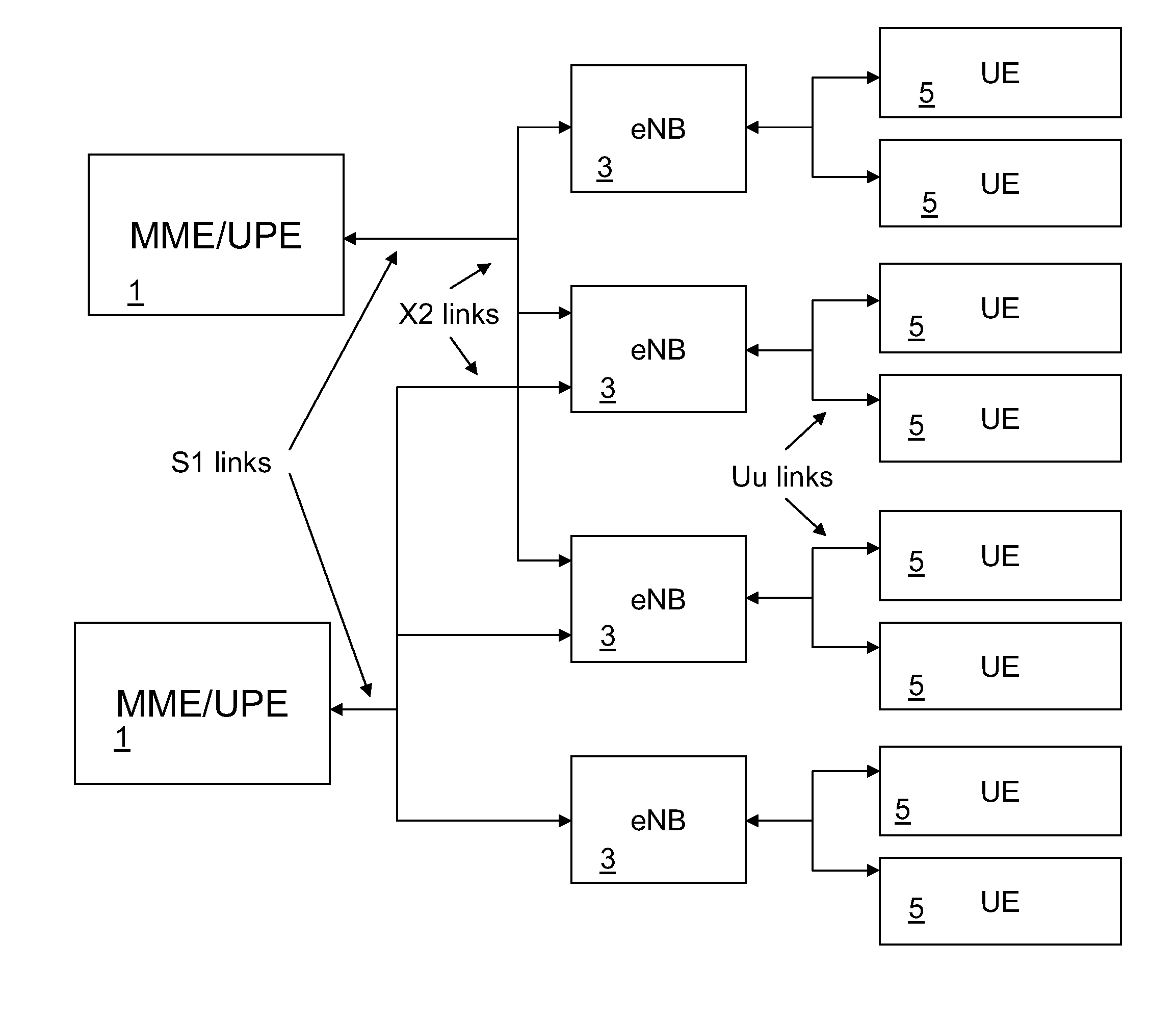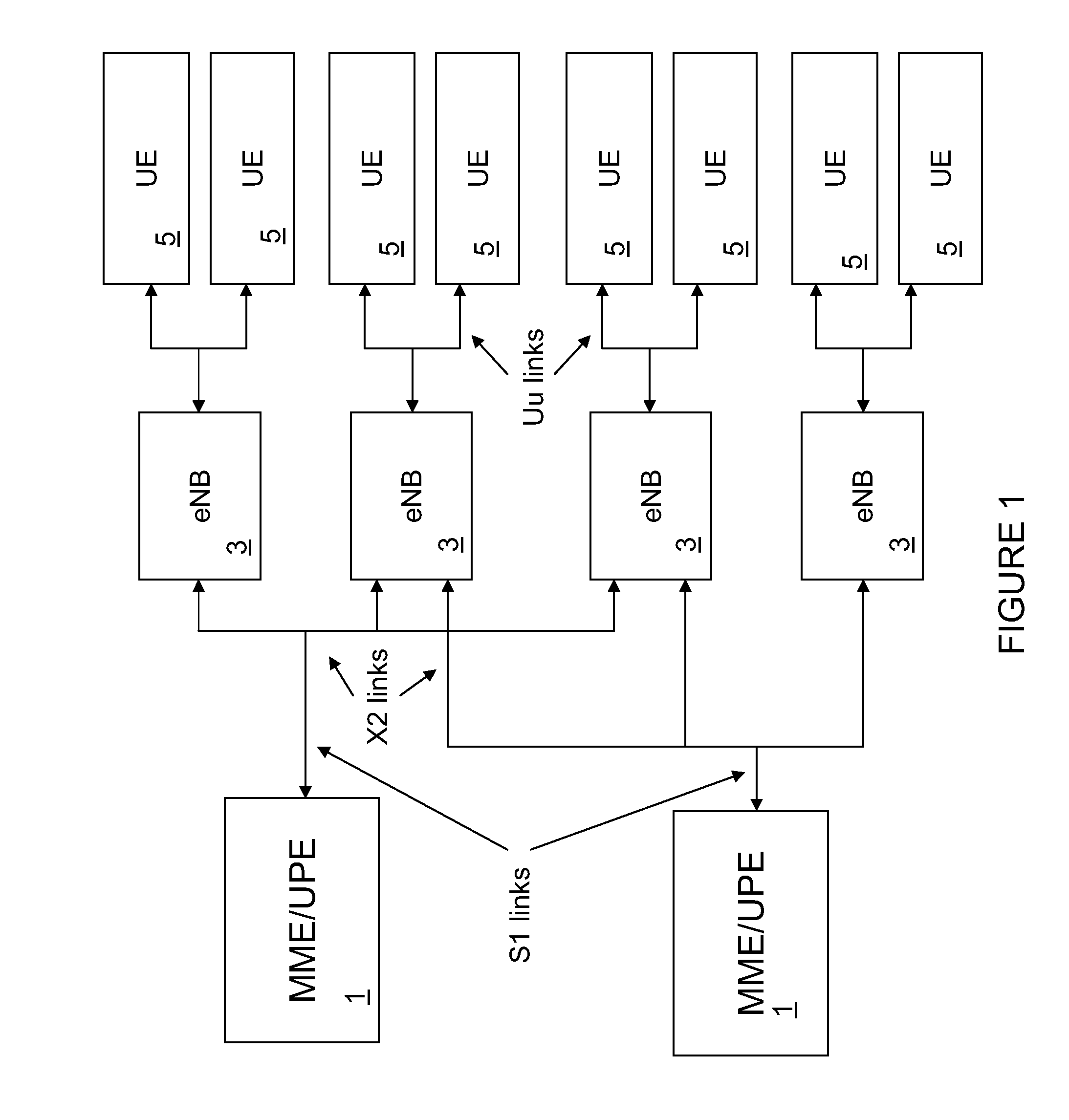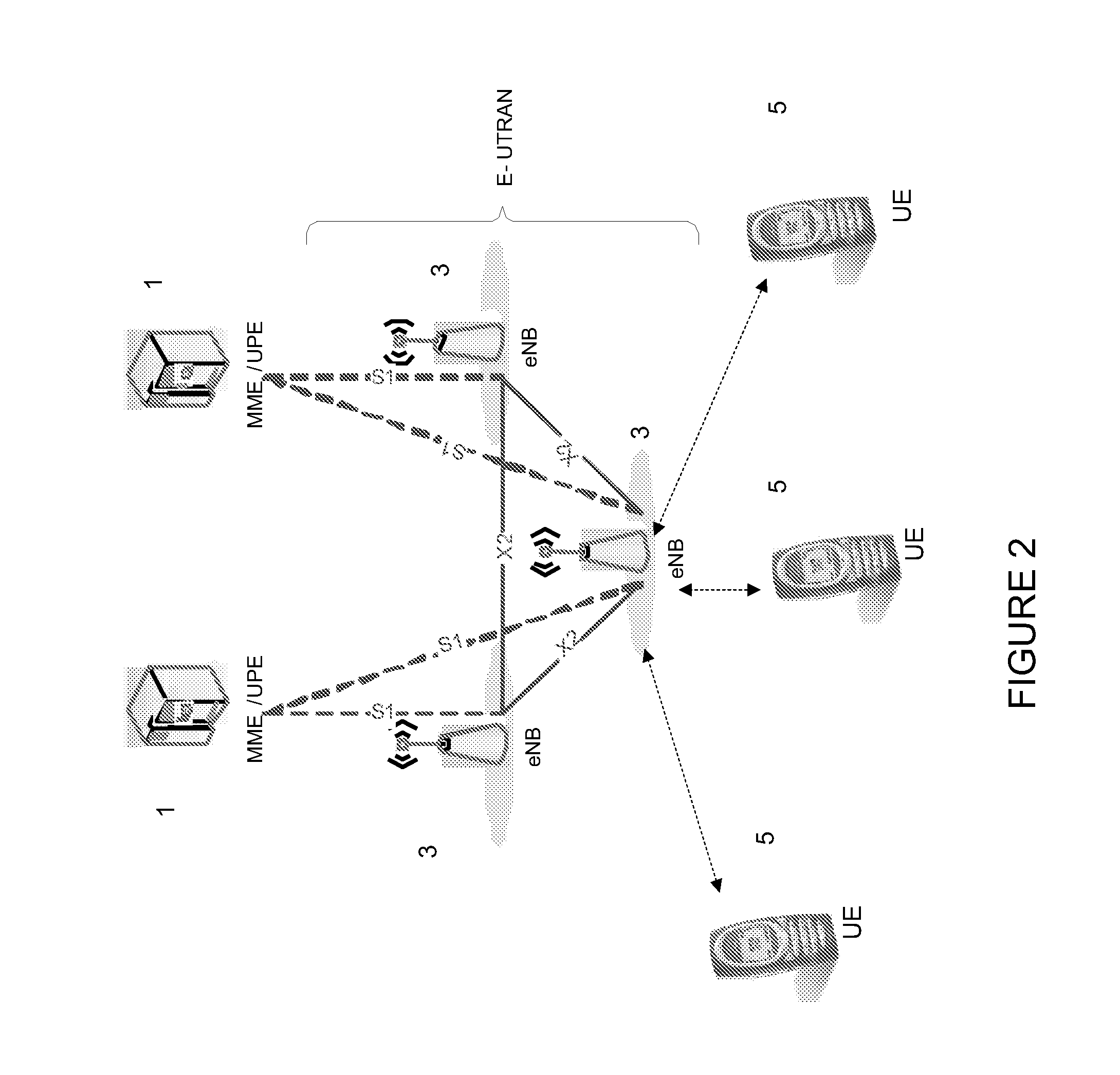Method and apparatus for flexible spectrum usage in communications systems
a spectrum and communication system technology, applied in the field of system and method for flexible use of radio resources, can solve the problems of increasing the need for additional bandwidth, affecting the efficiency of system usage, and emitted products of unwanted distortion in adjacent frequency channels, so as to reduce interference and reduce interference with other radio transmitters
- Summary
- Abstract
- Description
- Claims
- Application Information
AI Technical Summary
Benefits of technology
Problems solved by technology
Method used
Image
Examples
Embodiment Construction
[0048]Example embodiments are discussed in detail below. It should be appreciated, however, that the present invention provides inventive concepts that can be embodied in a wide variety of contexts.
[0049]Even though the majority of embodiments describe a wireless system with shared frequency use (FSU), the invention may also be applied to other communications systems where a resource allocation is shared among transmitters.
[0050]Prior to presenting embodiments of the invention, some additional background information will be provided to increase the readers' understanding of the characteristics and problems of some systems. Referring initially to FIG. 1, illustrated is a system level diagram of a radio frequency interface communication system including a wireless communication system that provides an environment for the application of the principles of the present invention. The wireless communication system may be configured to provide features included in the UMTS terrestrial radio...
PUM
 Login to View More
Login to View More Abstract
Description
Claims
Application Information
 Login to View More
Login to View More - R&D
- Intellectual Property
- Life Sciences
- Materials
- Tech Scout
- Unparalleled Data Quality
- Higher Quality Content
- 60% Fewer Hallucinations
Browse by: Latest US Patents, China's latest patents, Technical Efficacy Thesaurus, Application Domain, Technology Topic, Popular Technical Reports.
© 2025 PatSnap. All rights reserved.Legal|Privacy policy|Modern Slavery Act Transparency Statement|Sitemap|About US| Contact US: help@patsnap.com



